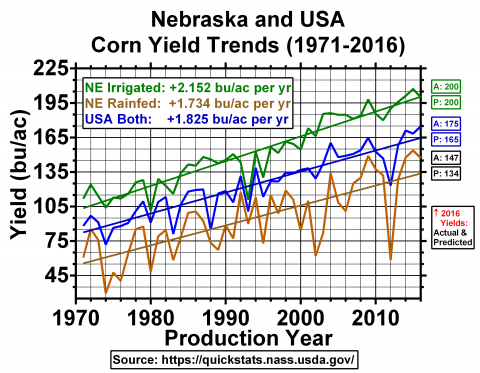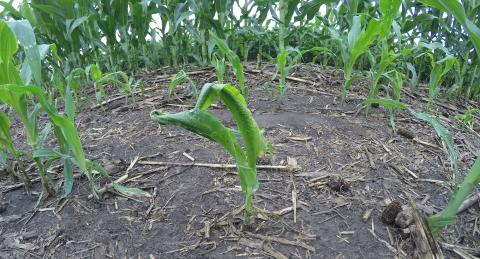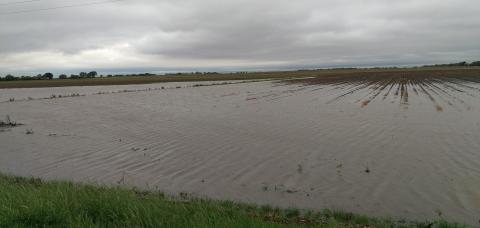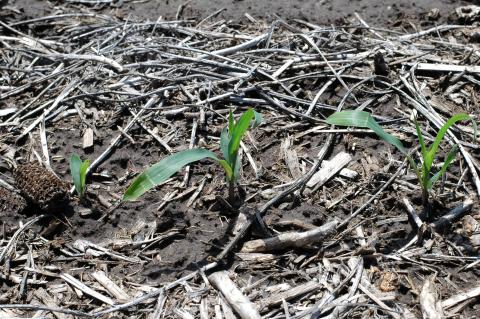Soybean and Corn Yield and Acreage Trends through 2016
May 25, 2017
Nebraska soybean and corn yields steadily increased from 1971 to 2016, in both irrigated and rainfed production fields. Charts based on USDA National Agricultural Statistics Service numbers track these changes.
Evaluating Early-Season Hail Damage in Corn
May 25, 2017
Factors to consider when assessing early-season hail damage in corn. Growers urged to wait 7-10 days after hail to make full assessment.
Postemergence (Rescue) Herbicide Options for Control of Glyphosate-Resistant Marestail in Corn and Soybean
May 24, 2017
Several factors have contributed to delayed applications and marestail escapes this spring. Includes recommendations for timely postemergence control in corn and soybean.
Scouting and Managing Stalk Borer in Corn
May 24, 2017
Common stalk borer eggs have hatched throughout Nebraska and scouting should begin when 1300-1400 degree days (DD) have accumulated. Current accumulations range from 500 to 1200 DD.
Corn Survival in Ponded or Flooded Fields
May 19, 2017
Heavy rains of 2 to more than 4 inches in south central Nebraska May 15-19 have led to ponding or flooding in many fields. Survival of young corn plants under these conditions depends on several factors, described here.
Cross-Banding on Corn Leaves: One Week Later
May 17, 2017
A gallery of photos showing decreased effect of yellow cross-banding in corn leaves in south central Nebraska one week after initial report in CropWatch. This effect was due to pre-emergent cold temperatures and is not expected to affect yield.

‘Cross-Banding’ on Corn Leaves Due to Pre-Emergent, Cold Soil Temperatures
May 12, 2017
Early-planted corn at the university's South Central Ag Lab was not emerged during the late-April cold snap, but upon emergence displayed symptoms of “cross-banding”: yellow to pale green, horizontal bands ― perpendicular to the leaf midribs. These often appear in a similar position on other seedlings and at about the same height above ground on different leaves.
Scout Emerging Corn for Early Season Insects
May 11, 2017
As corn begins to emerge, be alert to the potential for damage from early season insects such as cutworms, wireworms, or white grubs. Wireworms and white grubs are most often associated with fields that have been in pasture or CRP where the grasses were allowed to grow for more than one year. It is rare to see these problems in continuous corn, but exceptions happen. Since wireworms and white grubs feed underground and cutworms feed on or below the soil surface, scout for plant damage and then dig in soil around the plant to identify the insect causing the damage.






